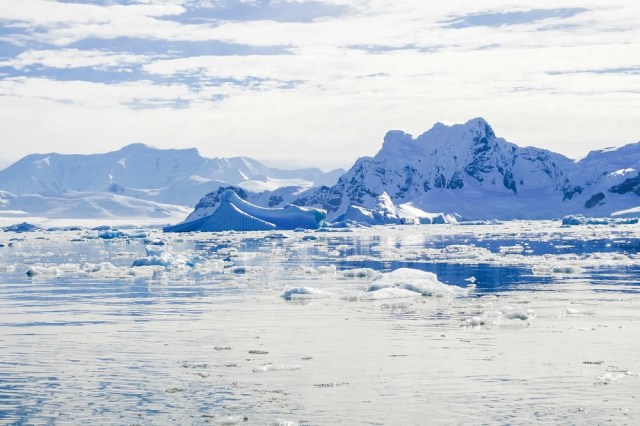
The new Demon Slayer anime movie knocks the final Japanese live-action work out of the country’s top list.
You could be forgiven for not being sure just how big of a hit Demon Slayer: Kimetsu no Yaiba–The Movie: Infinity Castle was going to be. Yes, the last Demon Slayer theatrical anime, 2020’s Mugen Train, is the highest-grossing movie ever at Japanese theaters, but it owes part of its it status to the pop cultural phenomenon momentum it built up as it approached the record, and its mid-pandemic release meant it didn’t have a lot of competition at the time, either in movies specifically or entertainment options in general. Also, while Mugen Train itself debuted a few months after the Demon Slayer manga finished, it’s now been more than five years since the source material concluded, and in the meantime the hype around the series had quieted down a fair bit.
But Infinity Castle, which premiered in Japanese theaters on July 18, has turned out to be an undeniable smash hit. It’s broken both Japan’s all-time opening day and single-day box office records, and took only 8 days to surpass 10 billion yen (US$67.57 million), also a Japanese record. After just 17 days, it’s total earnings reached approximately 17.64 billion yen, and Infinity Caslte has now ascended into the top 10 highest-grossing movies ever in Japan.
▼ Preview video for Infinity Castle
In reaching the top 10, Infinity Castle has pushed 2003’s Bayside Shakedown 2, part of the Odoru Daisosasen franchise, down to number 11 on the list. Bayside Shakedown 2 is a police story, but more significantly, it’s a live-action film, and it was the final Japanese live-action movie in the top 10 earners at Japanese theaters. With Infinity Castle now taking its place, the 10 highest-grossing movies at Japanese theaters are all either anime or foreign films.
Since Infinity Train still sits atop the list, Demon Slayer now commands 1/5 of the top 10 list, Studio Ghibli accounts for another 30 percent, and the One Piece franchise and director Makoto Shinkai each one representative too. Disney also has a spot, and the remaining two movies, both non-Japanese productions, are Titanic and the first Harry Potter.
● Highest-grossing films at Japanese box office
1. Demon Slayer: Kimetsu no Yaiba – The Movie: Mugen Train: 40.75 billion yen
2. Spirited Away: 31.68 billion yen
3. Titanic: 27.77 billion yen
4. Frozen: 25.5 billion yen
5. Your Name: 25.17 billion yen
6. One Piece Film: Red: 20.34 billion yen
7. Harry Potter and the Philosopher’s Stone: 20.3 billion yen
8. Princess Mononoke: 19.7 billion yen
9. Howl’s Moving Castle: 19.6 billion yen
10. Demon Slayer: Kimetsu no Yaiba–The Movie: Infinity Castle: 17.64 billion yen
Not only are there no longer any Japanese live-action movies in the top 10, there are only three in to the top 50: Bayside Shakedown 2 at number 11, 1983’s Antarctica at number 38, and the original Bayside Shakedown movie, from 1998, at number 47. Filtering out the non-Japanese films in the top 50 leaves 21 Japanese productions, with anime occupying all of the top 7 spots and 17 of the top 19, with the first Bayside Shakedown bringing up the rear.
▼ It’s also worth noting that though Antarctica (titled Nankyoku Monogatari in Japanese) is live-action, in the eyes of many Japanese fans it’s the dogs that are the real stars of the picture, not the humans.
The lack of domestically made live-action works amongst the top 10 highest-grossing movies in Japan isn’t necessarily a sign that Japan has no interest in the format, so much as a reflection of market and societal conditions that make it difficult for Japan to produce live-action blockbusters or epics. In the modern era, Japanese moviegoers have never had any widespread aversion to foreign films, and the difference in market sizes mean that Japan’s live-action movie industry generally can’t compete with Hollywood studios in terms of budgets and production values in crafting fantasy realms or sci-fi worlds for live-action movies. As for grounded movies set in the present day, Japan’s low crime levels and generally peaceful, stable day-to-day life don’t lend themselves to thrilling action and suspense. Pumping out big-screen spectacles, the sorts of movies that pull in record-setting-size crowds, is a tall order for Japanese live-action studios, and so creators and producers looking to make blockbusters generally turn to the anime format instead. In contrast, live-action studios more commonly focus on lower-key character-driven stories, which often bring in more modestly sized audiences.
It’s also interesting to note that of the top 10 highest earners at Japanese theaters, nine of them are fantasy movies, with Titanic the only outlier. Meanwhile, the top 10 list for theaters in the U.S. and Canada is dominated by the science-fiction genre (assuming we include superhero movies in the category), with four Marvel movies, two from the Avatar franchise, one each from Star Wars and Jurassic Park, and the list rounded out by Top Gun: Maverick and Titanic, the latter being the only movie on both the Japan and U.S./Canada lists.
▼ Making the iceberg one of the most hated movie villains of all time

It remains to be seen if Infinity Castle will have the legs to pass Mugen Train, but it’s already selling tickets as a faster pace than the previous Demon Slayer did, and with its seat-jacking promotion helping it along, it just might end up becoming Japan’s biggest movie ever.
Source: Oricon News via Livedoor News via Jin
Top image: YouTube/アニプレックス チャンネル
Insert image: Pakutaso
● Want to hear about SoraNews24’s latest articles as soon as they’re published? Follow us on Facebook and Twitter!






